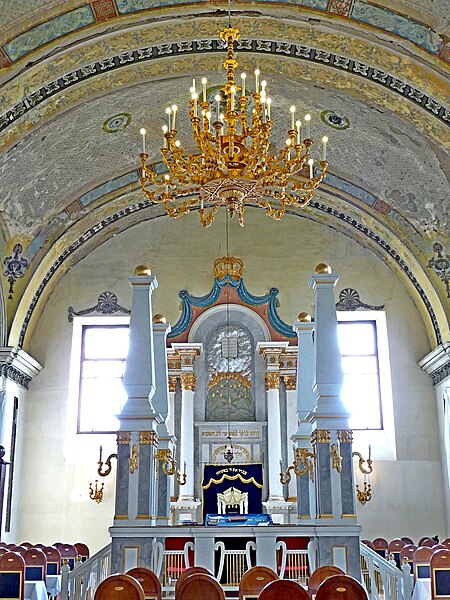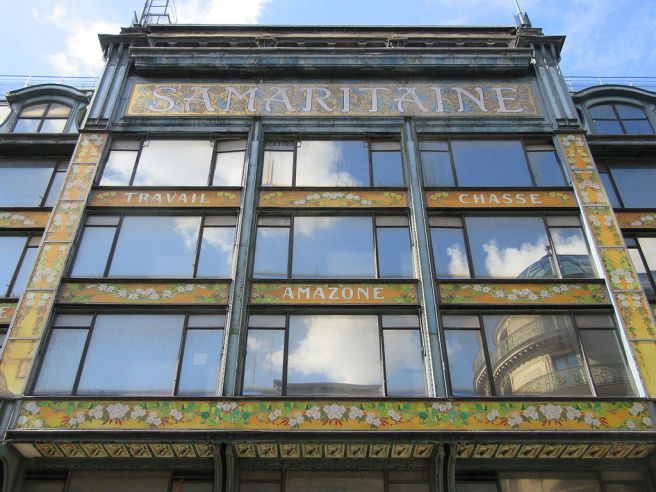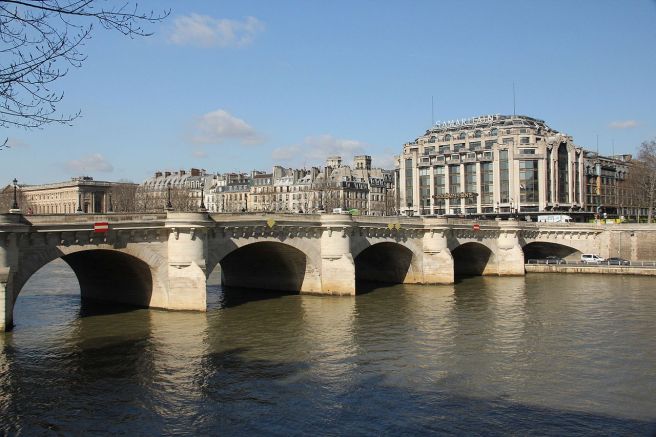
Copyright Elgaard, Creative Commons Attribution-Share Alike 4.0 International
The Óbuda Synagogue, which appears in my currently still hiatused WIP The Strongest Branches of Uprooted Trees, was built from 1820–21, when the then-town of Óbuda had Hungary’s biggest Jewish community. At the time, Jews were forbidden to live in Buda. (In 1873, Buda, Óbuda, and Pest united to become the beautiful city of Budapest.)
The Óbuda Jewish community dates back to at least 1349. By the 15th century, it had grown substantially, but the city was wiped out by the Ottomans after the 1526 Battle of Mohács. There was no more record of Jewish population until the 1712 census, which listed 24 families and 88 people, mostly Moravian immigrants.

Copyright Csörföly D, Creative Commons Attribution-Share Alike 3.0 Unported
They were under the protection of Count Péter Zichy, whose private lands included Óbuda. Because they always paid the mandated protective tax on time and in full, they were able to live in peace, without harassment by authorities, and were granted their own courts of law, the right to buy land and start business, kosher meat and wine.
Their first synagogue was built in 1737 and outgrown in 1746, after which Countess Zsuzsanna Zichy ordered it expanded. The next shul was designed in Baroque style from 1767–69, built by Máté Nöpauer. Unfortunately, the walls cracked on account of a bad foundation and poor soil.
The Buda Building Committee enlisted experts in 1817 to discern if a new shul should be built to replace the existing one. They decided to rebuild it with mostly the same walls.

Copyright Joalbertine, Creative Commons Attribution-Share Alike 3.0 Unported
Architect András Landherr was put in charge of the project, which lasted a year and a half. The shul got a new southern façade, 662 seats (364 for men and 298 in the ladies’ gallery), a vestibule with six Corinthian columns, and a new roof structure. Ferenc Goldringer served as carpenter, and János Maurer did the stucco.
Under the tympanum (decorative triangular portion above the columns) is the Hebrew quote “Every prayer, every supplication, that comes from any man…and stretches out his hands towards this house” (1 Kings 8:38).
Copyright VinceB, Creative Commons Attribution-Share Alike 3.0 Unported
The synagogue was consecrated on 20 July 1821, with great fanfare. It was one of the most beautiful, magnificent, awe-inspiring European buildings of the era. Even Archduke Joseph of Austria (Palatine of Hungary) frequently brought foreign guests there to show it off.
The Pest Flood of March 1838 damaged the building, and congregants had to row into it in boats to save the Torah scrolls. At its height, there were 28 scrolls.
Copyright Fekist, Creative Commons Attribution-Share Alike 2.5 Generic
In 1900, architect Gyula Ullmann renovated the shul with Art Nouveau elements complementing its original French Empire style. Electric lights were also added.
During WWI, the government requisitioned the copper roof to be melted down into ammunition. Many other houses of worship in Austria–Hungary also had their roofs, bells, gutters and other metal components taken for war machinery. Some churches’ crucifixes were even melted down.

Copyright Fekist, Creative Commons Attribution-Share Alike 4.0 International
At the time of its 1821 reconstruction, the synagogue was Orthodox, but after the death of Rabbi Moses Münz in 1831, they joined the uniquely Hungarian denomination Neology, which is comparable to liberal Modern Orthodox or very, very old-school Conservative.
The congregation gradually shrank during the late 19th and early 20th centuries as more and more people moved to the Pest side of Budapest, which was the centre of Hungarian Jewish life in that era.

Copyright Fekist, Creative Commons Attribution-Share Alike 4.0 International
There were an estimated 3,600 members in the spring of 1944, when the Nazis invaded and occupied Hungary. This represented a 40% decrease from 1929. Though Budapest was relatively safer than the countryside in that there were no deportations to Auschwitz, there were still two ghettoes in the city where people were forced to live. Living conditions were also extremely rough, and many Budapestis were shot into the Danube by the fascist Arrow Cross.
About 3,000 Jews on the Óbuda side of the city perished. The shul was also damaged. Rabbi József Neumann survived and stayed with his community until retiring at age eighty in 1956, though his first wife, Katalin Bick, was murdered in 1944.

Copyright Fekist, Creative Commons Attribution-Share Alike 4.0 International
Though the building was repaired from 1946–47, its religious school was forced by the Soviets to close in 1948. The next year, the Óbuda Jewish community lost its independence and had to merge with the greater Budapest religious community.
Because of dwindling attendance under Soviet repression, immigration to other countries, and the devastating membership loss of the Shoah, Óbuda Synagogue was sold in the mid-Sixties and turned into a TV station. However, it gained protection as a national monument in 1957, so there was never any real danger of it being torn down.

Copyright Fekist, Creative Commons Attribution-Share Alike 4.0 International
In 2010, the synagogue was renovated and reconsecrated. On 8 September, Rosh Hashanah, the doors opened to the public and regular worship resumed under Rabbi Slomó (né Máté) Köves, one of Hungary’s leading contemporary rabbis. He strives to build a positive Jewish identity and community based on our religious heritage and culture, instead of a negative identity based primarily on the Shoah.
Today Óbuda Synagogue once more has a thriving congregation, despite the worrying growth of antisemitism in modern Hungary.















































